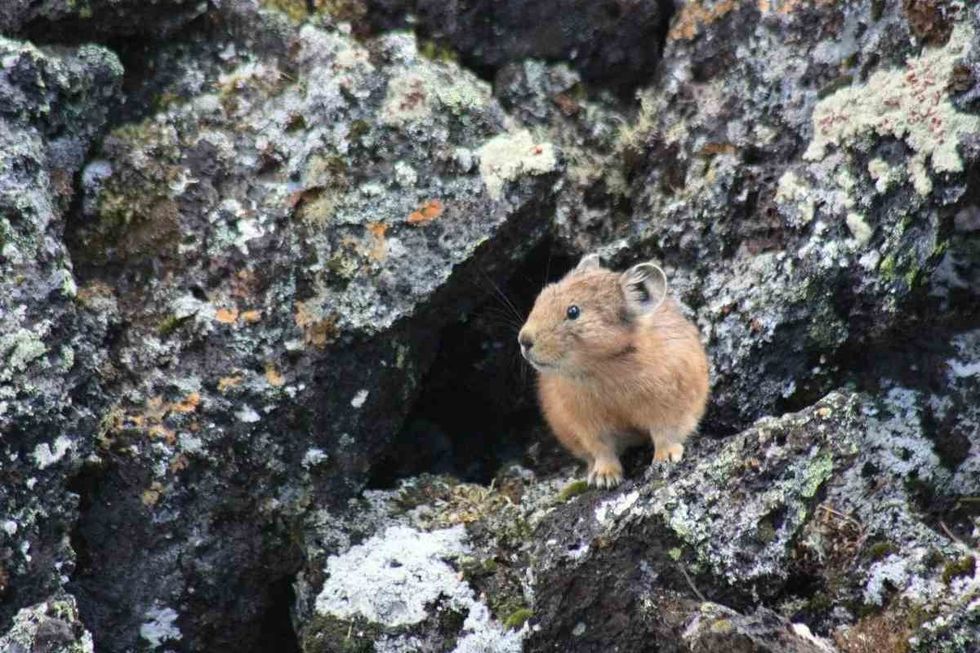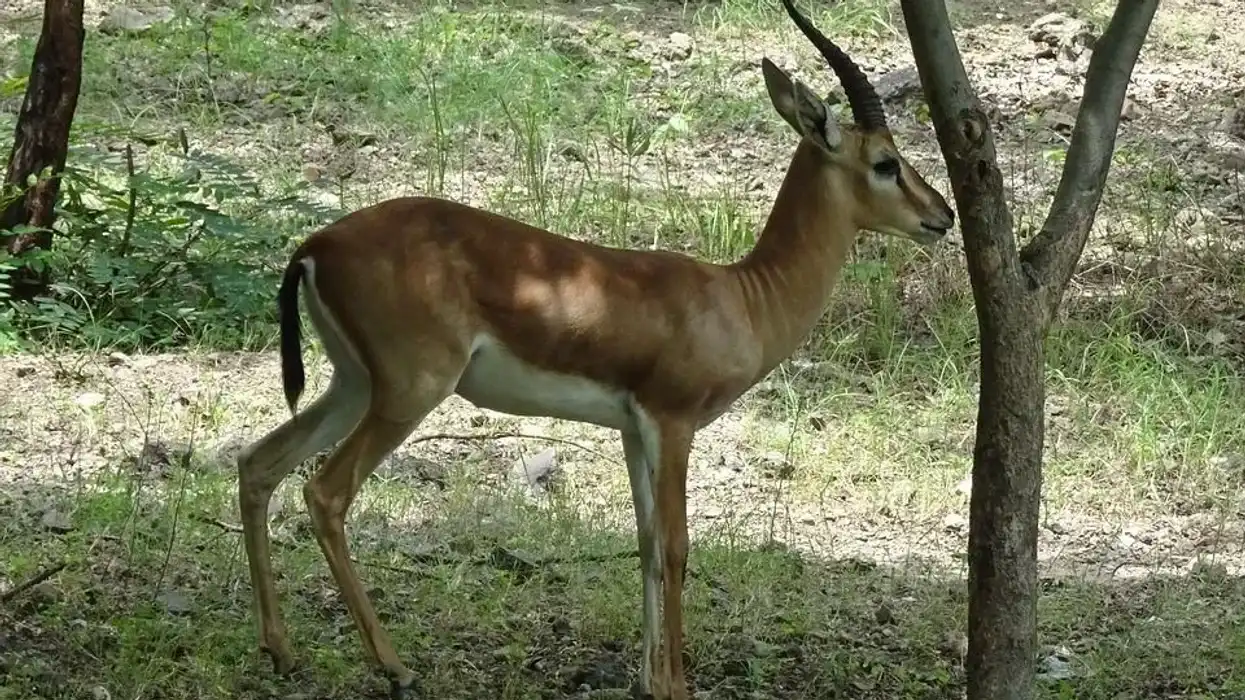American pikas are the smallest members of the Lagomorph group. This cute mammal is related to rabbits and hares with a cuddly appearance. They can be found in many U.S. states' alpine terrains and high mountain areas, including California, Colorado, Nevada, Utah, New Mexico, and western Canada.
Pikas have thick fur that protects them in these inhospitable environments, and during summers, they put on much lighter fur. Pikas do not hibernate and are active during the daytime; in winters, they tend to spend most of their time inside their dens.
Pikas are wild animals but are not very dangerous; they have each other's back when there's a threat. Pikas are non-edible species, and their predators include hawks, weasels, and coyotes.
Pikas love weeds, grasses, and tall wildflowers, and as their growth is less during winter, Pikas prepare for this lean period by saving food during the summer.
There is direct harm to these species due to global warming, and to protect pikas and their habitat, necessary research by the U.S. Fish and Wildlife Service is underway.
Read on to learn all about the American pika adaptations, habitat, and life. If you enjoy these fun facts about American Pikas, then check out brown hare and black-tailed prairie dog facts too.
American Pika Interesting Facts
What type of animal is an American pika?
The American pika (Ochotona princeps) is from the family Ochotonidae. They are herbivorous, smaller relatives of rabbits and hares. These diurnal species are found in western North American alpine and mountain regions above the tree line. Pikas live in high elevation, alpine, rocky mountain regions.
What class of animal does an American pika belong to?
Pikas are rodent-like, small mammals. They represent the Lagomorphs, a group otherwise represented by rabbits.
How many American pikas are there in the world?
It is unclear how many pikas are left in the world as of today. Pikas are currently decreasing in population. As compared to the previously known numbers, they have already disappeared from more than one-third of their habitat in Oregon and Nevada. The pikas are not federally listed under the Endangered Species Act despite their dire situation.
Where does an American pika live?
Based on metapopulation structure and geography, the pika is broken into 36 subspecies. Throughout the western United States and Canada, Pikas inhabit alpine and rocky mountain regions from northern New Mexico to central British Columbia, the Sierra Nevada of California, and the Great Basin through the Cascade Range of Washington and Oregon.
What is an American pika's habitat?
Pikas reside above the tree line, restricted to cool watercourses or high peaks. In the south, they are rarely seen below 2,500 m, and in the northern territory, they may be found near sea level to 3,000 m. Highly intolerant to diurnal temperatures, they inhabit talus fields fringed by alpine meadows and broken rock.
Who do American pikas live with?
Pikas live in colonies, close to each other, and at the same time, they are also very territorial. They build dens between rocks to protect themselves from predators and extreme temperatures.
They are very vocal, so they use their noises to send a warning call to alert others to any threats or to give calls to define boundaries with other Pikas.
How long does an American pika live?
The pikas can generally live up to six to seven years, but many die after three or four years due to changing climate conditions.
How do they reproduce?
American pikas start breeding from the second year of their life. April to July is its mating season, and the pikas are generally monogamous, and they find their mates from adjacent territories.
Female pikas may have up to two litters in a year depending on the location; they also exhibit mate choice if there is more than one potential mate available. Females can have a litter of two to five young at once, and these new pups can be between 10-12 g at birth.
What is their conservation status?
American pikas are considered species of Least concern with decreasing populations. As they live in cool and higher mountains, they are susceptible to hot temperatures.
Pikas are observed to be moving to high elevation terrains to find suitable habitats, and one of the reasons found is rising temperatures. This can be treated as an early warning sign for detecting alarming global warming in the western United States.
Pikas typically stick to small, disconnected habitat islands in the various mountain territory regions and cannot easily migrate to climate change. When exposed to high temperatures, more than 77.9 °F (25.5 °C ), they can even die in six hours without a shelter to escape the heat.
In warmer weather or midday sun, pikas become inactive and find refuge in cooler dens.
American Pika Fun Facts
What do American pikas look like?
American pikas are short with a stout body and round, big ears. They do not have any visible tails and short legs. They have thick fur colored in black and brown, meant to camouflage among rocks.
The fur can keep them warm, usually grayer and longer in the winter months. The fur can be grayish to cinnamon-brown with tawny or ochraceous hues in summer. They can reach about seven to eight inches (18-20 cm) in size.
How cute are they?
American pikas are very cute because of their small size and rabbit-like look. They are also brilliant in communicating with each other, protecting themselves from predators, and finding food. During the summer months, pikas spend their time cutting the vegetation, sun-drying them, and storing them for long winter times.
How do they communicate?
The American pika sounds are like singing to protect and define their territory. They are very vocal and can communicate by making a call or different sounds. They also use these sounds to alert others of potential threats and attract mates. These sounds are squeaky and high-pitched, similar to a lamb's bleat.
How big is an American pika?
Although pikas are related to rabbits and hares, they are much smaller than them. An adult size can be the size of a tennis ball, and their young ones are not much bigger than walnuts. They can get up 8 in (20 cm). An American pika size is about the same as a giant hamster's size.
How fast can an American pika run?
Pikas are underestimated among climbers and hikers because they are our fists' size. However, they are swift runners, covering almost 15 mph (24 kph). By using their special communication skills, they can quickly gather as large groups within moments, and if threatened, they join in numbers upwards of 100 to fend off a predator.
How much does an American pika weigh?
The American pika weighs approximately 4 oz (110 g) in weight. Depending on the location, some male pikas are slightly larger than females. Among 30 known pika species, American pikas are medium-sized.
What are their male and female names of the species?
Generally, male pikas are referred to as 'bucks', and females are called 'does'. Historically, some of the common names of these species are 'rock rabbit', 'whistling hare', 'mouse hare', 'piping hare', and 'cony'.
What would you call a baby American pika?
There are no specific names for younger ones in the pika species. They are generally referred to as baby pikas.
What do they eat?
Pikas are herbivores and spend their time finding tall grass and flowering plants to eat with high nutritional value. They prefer plants with fats, water, protein, and calories. They are wise to avoid plants with toxins.
They collect food throughout summer and store them in their burrows which becomes their primary food source for winters. To secure their food, they are known to take up to 100 foraging trips a day. Pikas do not need much water as they get most of the water they need from eating plants.
Are they aggressive?
The North American pika species are rarely aggressive, and when they are, they are probably defending their territory to protect each other. They can sometimes be aggressive with other unfamiliar members of the same sex.
One pika may intrude on another pika's burrow but only when the resident is not home or is inactive. There are no records of them being dangerous, and they can quickly move into their rocky dens while whistling or giving a call to each other of potential predators.
Would they make a good pet?
Pikas are wild animals, and they do not make good pets as they are best suited to live in the mountains. Even if you manage to tame them when they are young, they will become less compatible with the household environment as they mature.
Also, the temperature must be regulated all the time to protect them; because if it gets too hot, they can die within hours. Therefore, an American pika pet is not recommended.
Did you know...
The Journal of Mammalogy, a study published in 2003, showed 9 out of 25 sampled American pika populations in the Great Basin had disappeared, leading biologists to conduct further investigations to determine these species' vulnerability. In 2010, the U.S. government decided not to add the pika under the U.S.
Endangered Species Act in the IUCN Red List. These species are still considered Least Concern.
In May 2010, the National Park Service Climate Change Response Program funded 'The Pikas in Peril Project', which collected data to find answers on how vulnerable the American pika is to future climate change in western North America.
A few National Park Service staff and a large team of researchers from eight national parks and three universities worked together on this.
'The Pikas in Peril Project' project was concluded in 2016.
Why is the American pika endangered?
Most of the Ochotona princeps species are currently experiencing significant global warming threats. Seven of them are listed as Vulnerable, and one among them is listed as Near Threatened.
The majority of these species are found in the Great Basin and are defenseless against global climate change. An in-depth scientific status review is underway by the U.S. Fish and Wildlife Service to determine if pika is protected under the Endangered Species Act (ESA).
The intent is not to decide if it is appropriate to give the American pika federal protection under the ESA. Instead, it is considered the first step that triggers a more thorough review of all possible biological information.
Here at Kidadl, we have carefully created lots of interesting family-friendly animal facts for everyone to discover! Learn more about some other mammals including snowshoe hare, or mountain hare.
You can even occupy yourself at home by drawing one on our march hare coloring pages.









